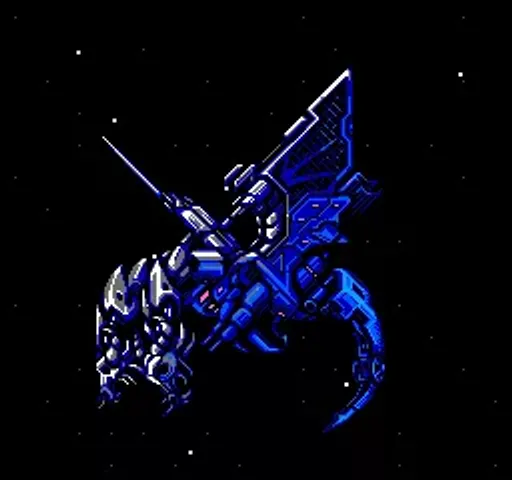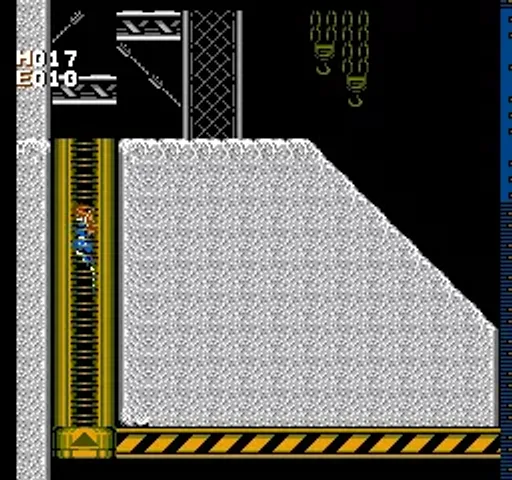 Alright, let’s dive into Strider. I’ve heard it’s quite the departure from typical platformers.
Alright, let’s dive into Strider. I’ve heard it’s quite the departure from typical platformers.
 Yes, I’ve been eager to try it out! I’ve read that Hiryu’s mission to rescue—or rather eliminate—Kain adds a compelling narrative twist.
Yes, I’ve been eager to try it out! I’ve read that Hiryu’s mission to rescue—or rather eliminate—Kain adds a compelling narrative twist.

 The plot is certainly gripping. Starting from the orbital space station, the Blue Dragon, the game quickly sets the stage for global adventures. It reminds me of those epic narratives in RPGs, though it’s an action game.
The plot is certainly gripping. Starting from the orbital space station, the Blue Dragon, the game quickly sets the stage for global adventures. It reminds me of those epic narratives in RPGs, though it’s an action game.
 Indeed. I think the combination of swift combat with the Cypher and the Metroidvania-style exploration sections could be quite engaging. Have you noticed how fluid Hiryu’s movements are? The jump mechanics feel responsive and precise.
Indeed. I think the combination of swift combat with the Cypher and the Metroidvania-style exploration sections could be quite engaging. Have you noticed how fluid Hiryu’s movements are? The jump mechanics feel responsive and precise.

 Yes, and there’s an impressive range of moves. So far, I’ve gained a few skills like the Jump and Spark. The ability to learn and use various skills makes it feel like a light version of the RPGs we love. It adds depth to the otherwise straightforward action.
Yes, and there’s an impressive range of moves. So far, I’ve gained a few skills like the Jump and Spark. The ability to learn and use various skills makes it feel like a light version of the RPGs we love. It adds depth to the otherwise straightforward action.
 I agree. Also, the Cypher’s modification to shoot plasma arrows adds a nice layer of strategy. Did you know the development team, Capcom, really pushed its limits on this one? They previously made hits like Mega Man, but Strider is unique with its fusion of genres.
I agree. Also, the Cypher’s modification to shoot plasma arrows adds a nice layer of strategy. Did you know the development team, Capcom, really pushed its limits on this one? They previously made hits like Mega Man, but Strider is unique with its fusion of genres.

 That’s right! Capcom’s involvement explains the high-quality visuals and gameplay. The detailed character sprites and diverse enemy designs are noteworthy. By the way, TechPop magazine mentioned that this was one of the first games developed simultaneously for the arcade and the NES console. Quite groundbreaking for ’89.
That’s right! Capcom’s involvement explains the high-quality visuals and gameplay. The detailed character sprites and diverse enemy designs are noteworthy. By the way, TechPop magazine mentioned that this was one of the first games developed simultaneously for the arcade and the NES console. Quite groundbreaking for ’89.
 Amazing. Let’s discuss the enemies—they’re varied and really keep you on your toes. I like that it isn’t just mindless hacking; there’s actual strategy required, especially when you’re up against bosses.
Amazing. Let’s discuss the enemies—they’re varied and really keep you on your toes. I like that it isn’t just mindless hacking; there’s actual strategy required, especially when you’re up against bosses.

 Speaking of, be prepared for the final boss, Meio. Spoiler ahead—his design is quite intimidating, and his attack patterns are challenging. You need precise timing and strategic use of your Cypher abilities to defeat him.
Speaking of, be prepared for the final boss, Meio. Spoiler ahead—his design is quite intimidating, and his attack patterns are challenging. You need precise timing and strategic use of your Cypher abilities to defeat him.
 I’m looking forward to that! The data disks that Hiryu collects add another dimension to the exploration aspect. Analyzing them aboard the Blue Dragon feels rewarding, like piecing together a mystery.
I’m looking forward to that! The data disks that Hiryu collects add another dimension to the exploration aspect. Analyzing them aboard the Blue Dragon feels rewarding, like piecing together a mystery.

 A tip for players: when you get to the later stages, conserve your health-restoring skills like Medical. Bosses and higher-level enemies hit harder, and those skills become crucial.
A tip for players: when you get to the later stages, conserve your health-restoring skills like Medical. Bosses and higher-level enemies hit harder, and those skills become crucial.
 Great advice. Also, don’t forget to backtrack and revisit previous areas once you’ve acquired new skills. There are often hidden upgrades and secrets that become accessible.
Great advice. Also, don’t forget to backtrack and revisit previous areas once you’ve acquired new skills. There are often hidden upgrades and secrets that become accessible.

 All in all, Strider is an ambitious blend of action, platforming, and narrative depth. While it has its flaws—some repeated enemy patterns and difficulty spikes—it brings something fresh to the NES library. Definitely worth playing for its innovation and engaging gameplay.
All in all, Strider is an ambitious blend of action, platforming, and narrative depth. While it has its flaws—some repeated enemy patterns and difficulty spikes—it brings something fresh to the NES library. Definitely worth playing for its innovation and engaging gameplay.
 Absolutely, it’s a must-try for fans of action-adventure games with a touch of RPG elements. The story, combat mechanics, and visual style are well-crafted. Capcom has certainly delivered another notable title.
Absolutely, it’s a must-try for fans of action-adventure games with a touch of RPG elements. The story, combat mechanics, and visual style are well-crafted. Capcom has certainly delivered another notable title.

 Let’s continue playing and try to beat our high score. The adventure isn’t over yet!
Let’s continue playing and try to beat our high score. The adventure isn’t over yet!

Fun Fact
Strider was one of the few games in the late ’80s that simultaneously had an arcade and console release, demonstrating Capcom’s innovative approach to game development. A special shout-out to the game designers who, despite the hardware limitations of the NES, managed to create such a vivid and engaging world.

